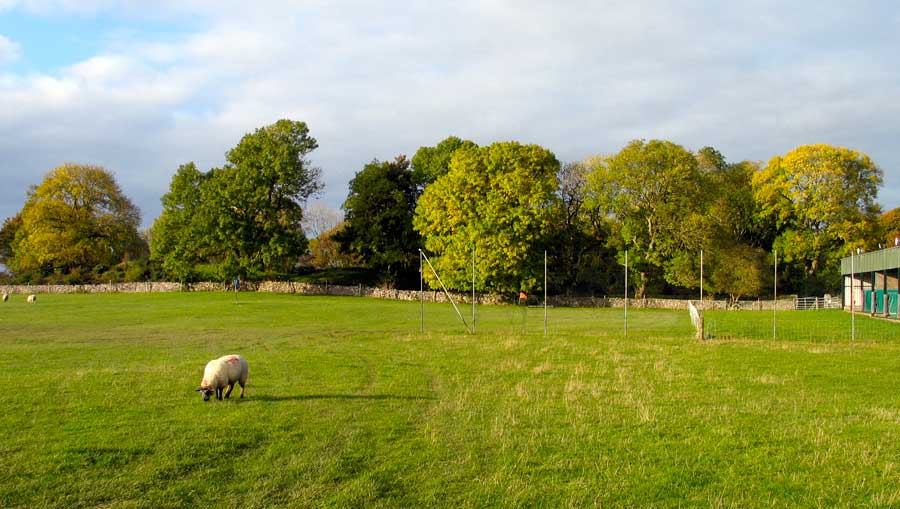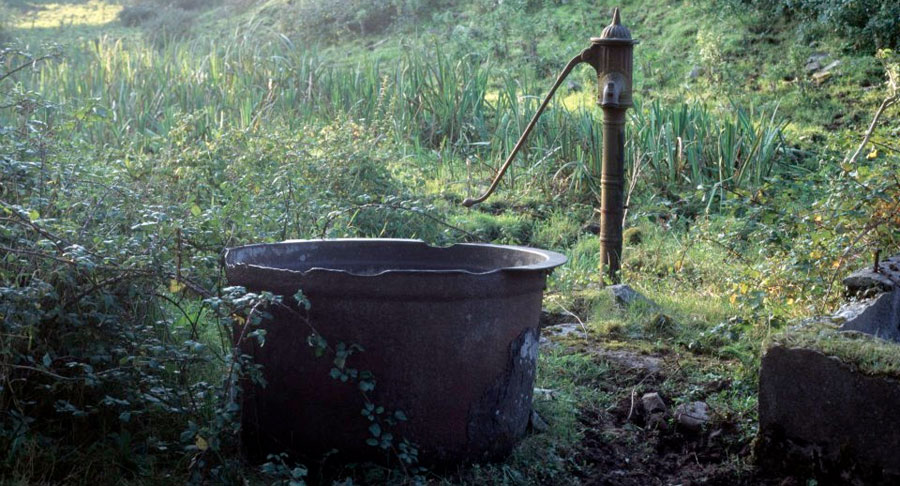Lisnalurg
The massive neolithic henge at Lisnalurg is one of the largest monuments in County Sligo. It is one kilometer north of the Garavogue river and five kilometers from the Abbeyquarter boulder circle in Sligo Town. The henge is a huge circular enclosure and is thought to be about 5,000 years old. The ring sits on the top of the ridge overlooking the Cuil Iorra peninsula and Knocknarea just to the south, and is located on an ancient route or trackway leading up to Creevykeel and the mouth of the Erne river to the north, beyond Benbulben.
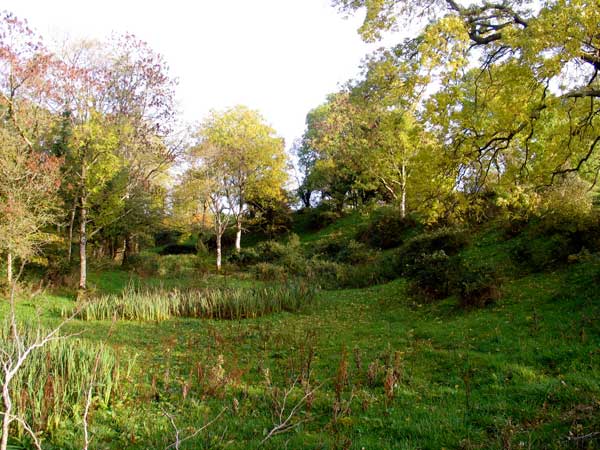
The enormous earthen ring is 150 meters in diameter, the outer ring 25 meters wide by six meters high. Within this is a smaller ring, still a huge enclosure at 75 meters in diameter, with a bank 11 meters thick. The wide marshy ditch between the rings holds rain water and this is how the monuments gets its name, the Fort of the Hollow.
The banks are clustered with trees and somewhat trampeled by farm animals, but at six meters high are very imposing, and have a fine view to the southwest. The monument overlooks the mouth of the river Garavogue on the north side opposite to the great megalithic complex on the peninsula.
Perhaps pilgrims stopped off here before crossing the river into sacred Cuil Iorra. It certainly would have been a good place for watchings winter suns and moons setting over the nearby megalithic complex.
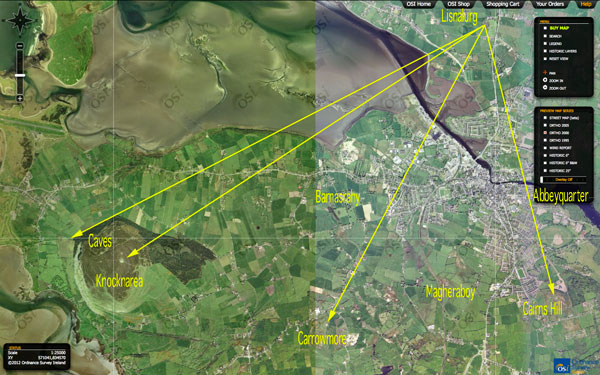
Lisnalurg
Taken from the Archaeological Guide to County Sligo by Sam Moore.
The location of this monument, which is near the Carrowmore megalithic cemetery (6km south-west of the site), its large scale and absence of an external ditch around the bank are of particular interest. This site displays features which are unparalleled in the Henge Monument class, also known as ceremonial embanked enclosures. These typically consist of a massive earthen bank scooped from a dished interior giving an effect of an amphitheatre and date from 2500- 1800 BC.
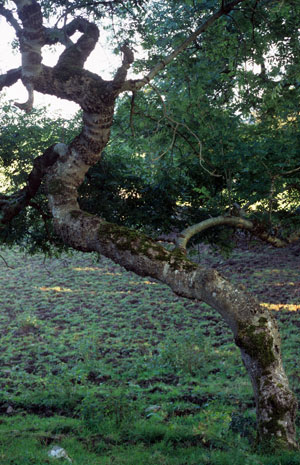
At Lisnalurg (which means Fort of the Hollow) a circular embankment forms a rim around a great hollow in which a circular earthwork with a levelled interior c.75m in diameter is centrally located. The overall diameter of the monument is 150m. A sharply cut-away opening in the south-west of the internal embankment corresponds with an opening 9m wide in the outer enclosure. Walls, cattle tracks and field entrances have disturbed the external enclosure, but it still has an average width of c.25m and rises to a height of 5m. The internal bank is less impressive having an average width at the base of 11m and height of 2.5m.
This is not a defensive site. The interior would have been prone to attack from above and there is no ditch as hollowing out the interior formed the bank. The inward-looking nature to the site and its other characteristics suggests it was used for ceremonial purposes.
Two other good examples are known in Sligo. One near Ballygawley at Knockatober (G7265/2698) and the other at Tonafortes west of the N4 roundabout at Carrowroe Church (G6877/3293).
Directions: 2km N of Sligo City On N15 north from Sligo City take the 3rd left turn signposted for Bertie's Pitch & Putt course. Park at Pitch & Putt and ask at Club House for access permission. The site is north of the Pitch & Putt course across a wall and is covered by trees, it becomes wet and marshy after rain, due to its hollow shape.

